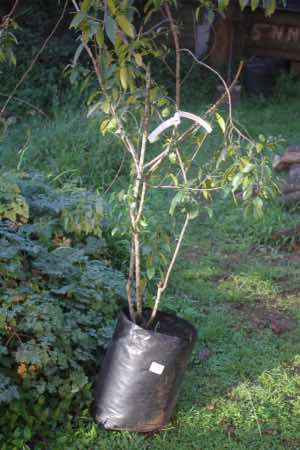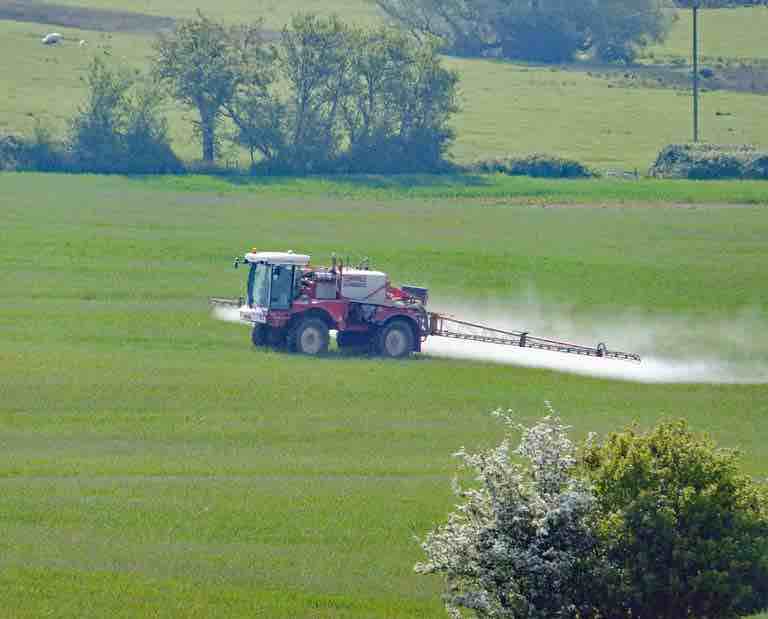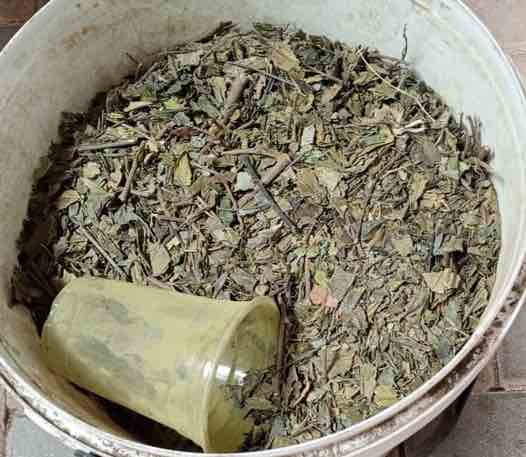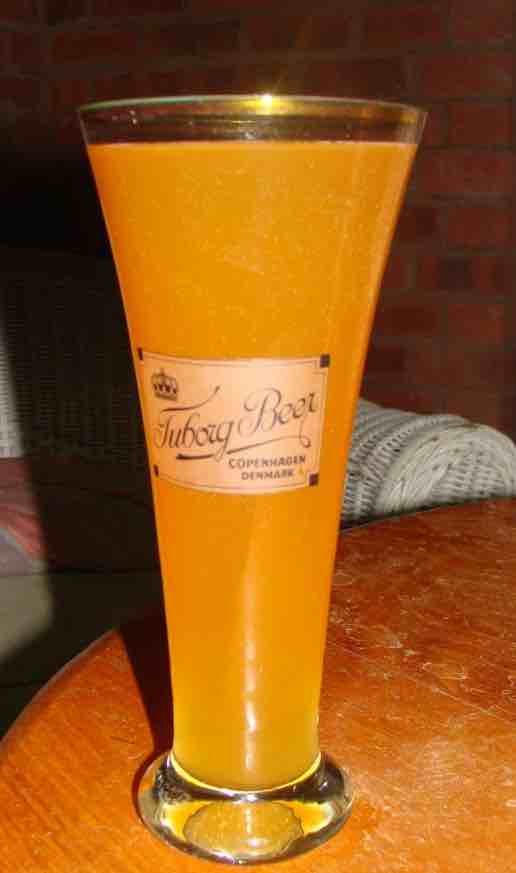- Bernard Preston homepage
- Planting trees
- African Dogwood Tree for Bees
African dogwood tree for bees
The African dogwood tree for bees also provides the geshu sticks that are used in the traditional Ethiopian mead called T'ej. Its flowers are also loved by sunbirds and insects; the fruit by many of our feathered friends.
In South Africa it's known as the shiny-leaf buckthorn or blinkblaar. The leaves are a dark green, almost black colour when mature, glittering in the sun.
The flowers are an inconspicuous green colour producing reddish fruit about the size of a pea.
Beekeepers love the African dogwood for two reasons. It's a good source of nectar; and the woody stems, known as geshu sticks, twigs and leaves are used in making a traditional beer, in much the same way as hops.

It grows into a smallish tree about 4m tall throughout much of Africa; more of a dense shrub really. It can be found quite high above sea level in forests and along stream beds.
Plants can easily be propagated from the seeds; they are hardy and can be grown in frosty areas.
Bees are threatened

Bees are threatened throughout the world by a poorly understood condition known generally as "colony collapse disease." There is much speculation about the cause; high levels of radiation, ecocides used in agriculture and various pests like the mite have all been fingered.
Growing huge areas of monocultures like corn and wheat has contributed; where many different indigenous flowers once bloomed providing nectar and diverse pollen for the bees for far more months of the year.
Since bees pollinate the plants that produce about a quarter of the food that we humans eat, the economic consequences of colony collapse disease cannot be overstated.
In addition conservationists have successfully called for the eradication of invasive tree species such as the eucalyptus that previously produced much nectar for bees. Modern farming has destroyed many of the "weeds" that once provided copious amounts of food for insects in general.
I remember the days when a drive in the country meant a windscreen splattered with dead insects; now thoughts of a Silent Spring begin to haunt us.
Along with the Halleria and Spekboom, the African dogwood for bees is a welcome new discovery to this apiarist and brewer of honey beer.
So beekeepers are always on the hunt for trees like the African dogwood for their nectar; and meaders for the sticks used when brewing a traditional Ethiopian t'ej.
The problem with meads in general is that they are really quite strong and need to be sipped cautiously. T'ej has a much lower alcohol content and can be enjoyed more freely.
 1 cup of geshu per 23 litres of T'ej
1 cup of geshu per 23 litres of T'ejMedicinal uses
The African dogwood tree for bees is also widely used in traditional herbal remedies for a variety of complaints from arthritis and joint sprains to a gargle for sore throats.
Braggart
A traditional braggart is a honey beer made using hops. T'ej on the other hand employs the twigs and leaves of the African dogwood tree for bees; the geshu provides the bitterness loved by the swillers of an ale. It counterbalances any sweetness.
Home brewing is slowly coming into its own since the research about commercial alcohol and cancer has begun to filter into the common press. The evidence is strong; even one glass of wine per week increases the likelihood of succumbing to cancer.
Yet the folk enjoying t'ej in Ethiopia live to a ripe old age; and the natural wines and beers in the Blue Zones. Ecocides sprayed on the grapes, pasteurisation and sulphites are being fingered.
Natural unpasteurised alcohol acts as probiotic, increasing our resistance to inflammatory conditions like Covid and diabetes. Perhaps this is how the African dogwood tree for bees is contributing to longevity.

A braggart is an English beer made using honey and hops; our version would make it with twigs from the African dogwood tree.
For me it is still in the pipeline. I am busy with many different kinds of mead; using fruit and honey to brew a melomel rather than geshu sticks from an African dogwood tree to make a traditional beer.
The tree is now a year old and ready for me to start attacking it for its twigs and leaves; a project waiting to begin.
The beauty of retirement is projects coming to fruition that have been long awaited. We are getting to African dogwood tree for bees.
Nectar for the bees and t'ej for me lie in the near future.
What is the best tree for bees?
This from my understanding is a silly question. Just as we humans should be eating from a wide range of foods, bees need nectar and pollen from many different trees and plants. True, one might be better than another.
But a monoculture of the very best tree would be terrible for bees; we hear it all the time from those involved in pollination services. After just two weeks the hives are seriously weakened.
African dogwood tree for bees
The African dogwood tree for bees and the birds too, is known as the shiny-leaf buckthorn; or blinkblaar.
When browsing use right click and "Open Link in New Tab" or you may get a bad gateway signal.
Newsletter
Our newsletter is entitled "create a cyan zone" at your home, preserving both yourself and Mother Earth for future generations; and the family too, of course. We promise not to spam you with daily emails promoting various products. You may get an occasional nudge to buy one of my books.
Here are the back issues.
- Lifestyle and ideal body weight
- What are ultra-processed foods?
- Investing in long-term health
- Diseases from plastic exposure
- Intensive lifestyle management for obesity has limited value
- A world largely devoid of Parkinson's Disease
- The impact of friendly bacteria in the tum on the prevention of cancer
- There's a hole in the bucket
- Everyone is talking about weight loss drugs
- Pull the sweet tooth
- If you suffer from heartburn plant a susu
- Refined maize meal and stunting
- Should agriculture and industry get priority for water and electricity?
- Nature is calling
- Mill your own flour
- Bake your own sourdough bread
- Microplastics from our water
- Alternative types of water storage
- Wear your clothes out
- Comfort foods
- Create a bee-friendly environment
- Go to bed slightly hungry
- Keep bees
- Blue zone folk are religious
- Reduce plastic waste
- Family is important
- What can go in compost?
- Grow broad beans for longevity
- Harvest and store sunshine
- Blue zone exercise
- Harvest and store your rainwater
- Create a cyan zone at your home
Did you find this page interesting? How about forwarding it to a friendly book or food junkie? Better still, a social media tick would help.
- Bernard Preston homepage
- Planting trees
- African Dogwood Tree for Bees
Address:
56 Groenekloof Rd,
Hilton, KZN
South Africa
Website:
https://www.bernard-preston.com